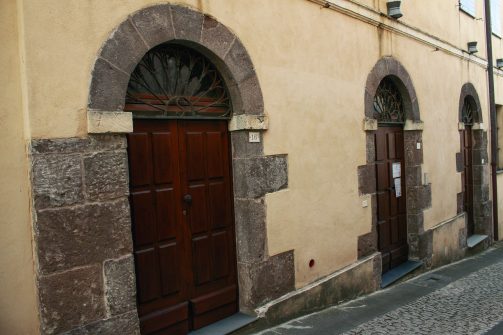The “Old Town Hall” building rose on what was the main street of the town in the late 1800s: “Via Grande,” later renamed “Via Vittorio Emanuele,” to house the Municipal House and Chiaramonti School together.
The ground floor of the building was used as a school, which was accessed directly from outside through two large gates that bear the wrought-iron letter S in the crescent at the top, which stands for “School.” The central gate, on the other hand, was the one leading to the municipal buildings. Instead, on the crescent of this entrance were the letters CC, meaning “municipal house.”
From the central entrance one climbs the stairs leading to the upper floor, home to the Municipal House from which one can immediately notice the frescoed vaults. The one in the stairwell shows the main symbols of the village: the church of San Matteo al Monte, the village’s old windmill, a nuraghe, and the Castelsardo lighthouse, Chiaramonti’s sea outlet. The most valuable fresco, however, is the one in the Reception Hall, on the northeast wall: “The Angel of the Fallen of Chiaramonti in the Great War 1915-18,” created by painter Fabbris in 1923, and recently restored. On display are the symbols of the Republic that President Emeritus Francesco Cossiga donated to the Citizenship.









